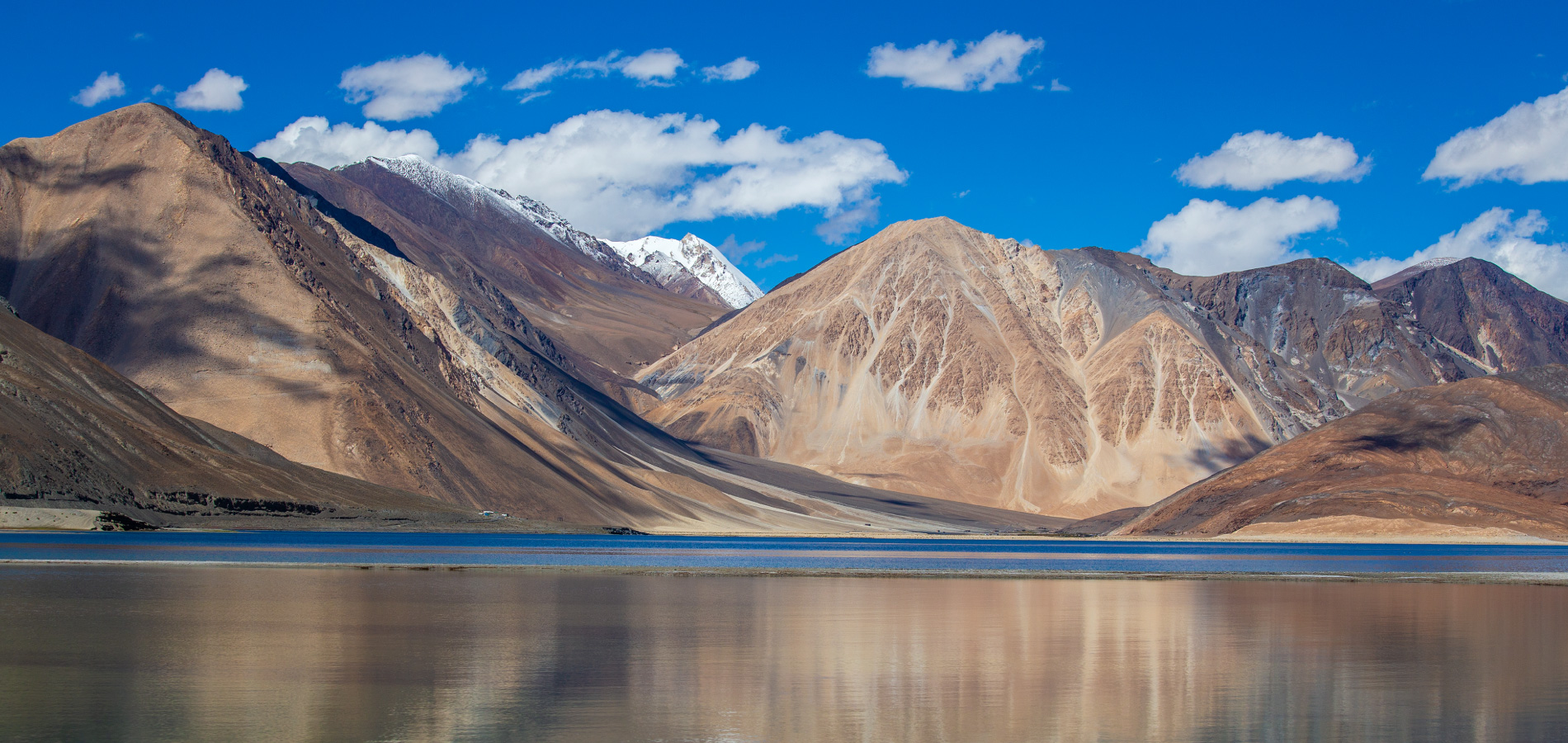
Ladakh has the largest telescope in Asia.
The bliss of summer season in Ladakh (April to June)
Indubitably, this is the best season to visit Ladakh. Eagerly anticipated, summer is the peak tourist season in Ladakh and temperatures around this time range from 30 degree Celsius to a minimum 5 degree Celsius. The snow has melted giving way to vibrant life and buzz of tourist activity. One can indulge in almost everything that this remote land has to offer when the sun is bright and pleasantly warm. Camping by the Pangong Tso Lake under a starry sky on a summer night is what tourists and enthusiastic travellers love to do. The lake is best enjoyed during day time when it mirrors the brilliant blue sky while surrounded by sweeping vistas of the mountains. Biking in Ladakh is a treat to the senses as you navigate the surreal landscapes and scenery. Drive through the unimaginable Khardung la (considered world’s highest motorable road) at a staggering height of 17,000 Feet. For thrill-seekers like you, summer season is a boon when mother nature opens its door to navigate their way through Ladakh’s gorgeous valleys, remote villages, centuries-old Gompas (monasteries), hidden valleys, formidable passes, and cosy homestays during treks that can take days to complete. Rafting is another activity enjoyed in summer in Ladakh, Kharu-Spituk route (for first-timers and amateurs) to the challenging Phey-Nimmo on the Indus River that takes days to complete. A miracle of nature, the Magnetic Hill (a gravity hill) must be explored to understand its rare phenomenon. Another major attraction, hop on to a Bactrian camel (double-humped camels) and take a safari across the dunes of Hunder in Nubra Valley. To top it all, Ladakhis celebrate the very colourful Hemis Festival (during June or July depending on the Tibetan calendar) at the 11th century Hemis Monastery. The spectacle of the masked dance – Cham, performed by the monks in brightly-coloured attire, dancing to the rhythmic music, is an event, you don’t want to miss! Locals come out in their traditional garb with their unique headgear and jewellery to celebrate.
The allure of monsoon season in Ladakh (July to September)
July through Mid-September brings monsoon in Ladakh and with it comes occasional landslides and roadblocks. Ladakh is a rain shadow area, which means the place enjoys moderate rainfall, yet whenever it does, there are bouts of the shower. The temperature at this time stays from a minimum 3 degree Celsius to maximum16 degree Celsius. The two rivers Indus and Zanskar swell up and meander through the valleys with their full might, is a sight to behold. If not outdoors, then experience monastic life in the spectacular monasteries (gompas) of Ladakh. There are several of them including Hemis Monastery, Thiksey Monastery, Diskit Monastery, Spituk Monastery, Phugtal Monastery, etc. On a beautiful rainy day, walk into one of the German bakeries in Leh town and sit leisurely sipping one of your favourite beverages as the rain thrum on the roof and windows. Better if you find a local eatery and try some of the Tibetan/Ladakhi cuisines; say dumplings or thukpa. As monsoon ceases toward the latter part of September, Ladakh is clad in gorgeous hues of nature in all its glory; the spectacle lingers on till early October. It is also the time preferred by thrill-seekers wanting to indulge in aero-sports.
The thrill of winter season in Ladakh (October to March)
A winter trip to Ladakh must be carefully planned amid harsh cold conditions with temperatures plummeting sub-zero levels that settles between -5 degree Celsius to -30 degree Celsius. Travelling to Ladakh during winter have their perks too, it unfolds amazing snow-covered landscapes, frozen lakes to walk over, icy treks among others. On top of it, there isn’t much tourist rush, and for adventure lovers, this means being able to enjoy Ladakh without interruption. Hotel rates are also cheaper. January is one of the best months to visit Ladakh for trekking as it is the time when one of the most adventurous and most difficult treks of the world – the Chadar Trek opens up till mid-March attracting adventure enthusiasts from across the globe. Walking over the frozen Zanskar River can be intimidating yet a speechless moment. Skiing and ice hockey are also other exciting winter activities here. Both are a favourite pastime of the Ladakhis. No wonder, Ladakh is growing as a destination for winter sports lovers in India. Moreover, winter is the time for several cultural and religious celebrations in Ladakh. Join the locals to celebrate the winter festivals such as Thiksay Gustor, Ladakhi Losar, Spituk Gustor, Diskit Gustor and Yargon Tungshak, among others. When the cold takes on you, you can always warm up to Ladakh’s butter tea in the morning, or savour a hot bowl of thukpa for dinner.
Pangong Tso Lake; Thiksey Monastery ; Khardung-la Pass ; Markha Valley ; Nubra Valley ; Tso Moriri lake ; Hemis National Park ; Diskit Monastery ; Shanti Stupa ; Royal Leh Palace ; Namgyal Tsemo Gompa ; Magnetic Hill ; Alchi ; Zanskar Valley ; Chadar Trek
Saka Dawa Festival
Tak Tok Festival
Matho Nagrang Festival
Ladakh Festival
Stok Guru Festival
Yuru Kabgyat Festival
Ladakh Harvest Festival
Dosmoche Festival
Phyang Tsedup Festival
Sindhu Darshan
Losar Festival
Hemis Festival;
1. Thukpa 2. Momos 3. Skyu 4. Tingmo 5. Chutagi 6. Chhurpi (Yak cheese) 7. Butter tea 8. Chang 9. Khambir 10. Apricot jam
